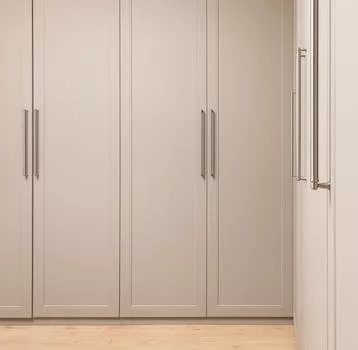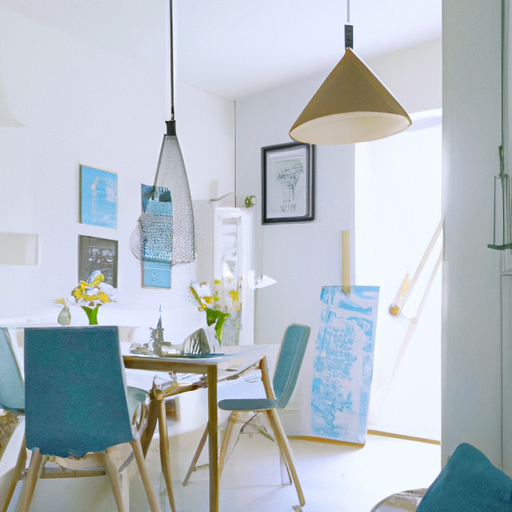Creating the Ultimate Open-Concept Layout for Socializing
Designing a home that is perfect for entertaining requires careful planning and consideration of various factors. The ultimate goal is to create a space that is both functional and inviting, allowing guests to feel comfortable and at ease. One of the most effective ways to achieve this is by incorporating an open-concept layout, which encourages socializing and interaction among guests. In this article, we will explore the key elements of designing an open-concept layout that is perfect for entertaining.
First and foremost, it is essential to consider the flow of the space. An open-concept layout should be designed in such a way that it allows for easy movement and conversation between different areas of the home. This can be achieved by strategically placing furniture and creating distinct zones for various activities, such as dining, lounging, and mingling. For instance, a large dining table can be placed in close proximity to the kitchen, allowing guests to easily transition from appetizers to the main course. Similarly, a comfortable seating area can be arranged near the entertainment center, encouraging guests to relax and engage in conversation.
Another important aspect of designing an open-concept layout for entertaining is ensuring that there is ample seating for all guests. This can be achieved by incorporating a variety of seating options, such as sofas, armchairs, and ottomans. Additionally, it is important to consider the placement of these seating options in relation to one another, as well as to the overall flow of the space. For example, arranging seating in a circular or semi-circular formation can encourage conversation and interaction among guests, while also allowing for easy movement throughout the space.
Lighting is another crucial element in creating an inviting atmosphere for entertaining. In an open-concept layout, it is important to have a combination of ambient, task, and accent lighting to create a warm and welcoming environment. Ambient lighting, such as recessed ceiling lights or floor lamps, provides general illumination for the entire space. Task lighting, such as pendant lights or under-cabinet lighting, is focused on specific areas where activities take place, such as the kitchen or dining table. Finally, accent lighting, such as wall sconces or table lamps, adds visual interest and highlights architectural features or artwork.
In addition to lighting, the choice of colors and materials can also greatly impact the overall ambiance of an open-concept layout. Neutral colors, such as beige, gray, or white, can create a sense of spaciousness and allow for easy coordination with various accent colors and décor items. Additionally, incorporating natural materials, such as wood or stone, can add warmth and texture to the space, making it more inviting for guests.
Finally, it is important to consider the functionality of the space when designing an open-concept layout for entertaining. This includes ensuring that there is adequate storage for items such as dishes, glassware, and serving utensils, as well as providing ample countertop space for food preparation and serving. Additionally, incorporating features such as a kitchen island or a wet bar can further enhance the functionality of the space, making it more conducive to entertaining.
In conclusion, designing a home that is perfect for entertaining requires careful consideration of various factors, including the flow of the space, seating options, lighting, colors and materials, and functionality. By incorporating an open-concept layout and paying attention to these key elements, homeowners can create a welcoming and inviting environment that is perfect for socializing and entertaining guests.
Designing a Stylish and Functional Outdoor Entertainment Space

Designing a home that is perfect for entertaining requires a thoughtful approach to both indoor and outdoor spaces. A stylish and functional outdoor entertainment space can elevate your gatherings and create memorable experiences for your guests. In this article, we will explore the essential elements of designing an outdoor entertainment space that is both visually appealing and practical.
One of the first considerations when designing an outdoor entertainment space is the layout. A well-planned layout can maximize the available space and create a natural flow for guests to move around. Start by identifying the primary function of the space, such as dining, lounging, or playing games. This will help you determine the appropriate furniture and accessories needed to create a comfortable and inviting atmosphere.
When selecting furniture for your outdoor entertainment space, prioritize comfort and durability. Look for pieces made from weather-resistant materials, such as teak, aluminum, or synthetic wicker. These materials can withstand the elements and require minimal maintenance, ensuring your furniture remains in excellent condition for years to come. Additionally, consider incorporating a mix of seating options, such as sofas, lounge chairs, and benches, to accommodate various group sizes and activities.
In addition to comfortable seating, a well-designed outdoor entertainment space should also include functional elements, such as a dining area and a cooking station. A large dining table with ample seating can serve as the focal point for outdoor meals and gatherings. If space allows, consider adding a built-in grill or an outdoor kitchen to elevate your outdoor cooking experience. This not only adds a practical element to your space but also encourages social interaction among guests.
Lighting is another crucial aspect of designing an outdoor entertainment space. Proper lighting can set the mood for your gatherings and ensure that your guests can safely navigate the area after dark. Incorporate a mix of ambient, task, and accent lighting to create a warm and inviting atmosphere. For example, string lights or lanterns can provide ambient lighting, while spotlights or sconces can illuminate specific areas, such as a cooking station or a walkway.
To create a visually appealing outdoor entertainment space, consider incorporating various textures and materials. Natural elements, such as wood, stone, and plants, can add warmth and character to your space. Additionally, decorative elements, such as outdoor rugs, cushions, and artwork, can help tie the space together and reflect your personal style.
One of the most important aspects of designing an outdoor entertainment space is ensuring that it is adaptable to various weather conditions. This may include incorporating shade structures, such as pergolas or umbrellas, to protect guests from the sun. Additionally, consider investing in outdoor heaters or a fire pit to extend the usability of your space during cooler months.
Finally, don’t forget to consider the needs of your guests when designing your outdoor entertainment space. This may include providing ample seating, ensuring easy access to restrooms, and offering a variety of entertainment options, such as games or a sound system. By keeping your guests’ comfort and enjoyment in mind, you can create an outdoor space that is perfect for entertaining.
In conclusion, designing a stylish and functional outdoor entertainment space requires careful consideration of layout, furniture, lighting, and weather adaptability. By incorporating these elements and prioritizing the needs of your guests, you can create an inviting and memorable space for entertaining. With a well-designed outdoor entertainment area, you can enjoy hosting gatherings and creating lasting memories with friends and family.
Integrating Smart Home Technology for Seamless Hosting
Designing a home that is perfect for entertaining requires a delicate balance of aesthetics, functionality, and technology. In today’s fast-paced world, smart home technology has become an essential component of modern living, offering convenience, efficiency, and security. When it comes to hosting guests, integrating smart home technology can elevate the experience, making it seamless and enjoyable for both the host and the guests. This article will explore various ways to incorporate smart home technology into your home design, ensuring that your space is well-equipped for entertaining.
One of the most important aspects of hosting is creating a comfortable and welcoming atmosphere for your guests. Lighting plays a crucial role in setting the mood and ambiance of a space. With smart lighting systems, you can easily control the brightness, color, and temperature of your lights, allowing you to create the perfect atmosphere for any occasion. You can also program lighting scenes for different events, such as a dimly lit setting for a movie night or a brightly lit space for a dinner party. Additionally, smart lighting systems can be controlled remotely through a smartphone or voice-activated devices, making it easy to adjust the lighting without interrupting your conversations with guests.
Another essential element of a well-designed entertaining space is a high-quality audio system. Smart speakers and multi-room audio systems allow you to stream music and other audio content throughout your home, creating a cohesive and immersive listening experience for your guests. Many smart audio systems can be controlled through voice commands or smartphone apps, allowing you to easily adjust the volume, change the playlist, or switch between audio sources without having to leave your guests. Furthermore, some smart audio systems can be integrated with other smart home devices, such as lighting and climate control systems, enabling you to create a fully synchronized and seamless hosting experience.
Climate control is another important factor to consider when designing a home for entertaining. Smart thermostats and climate control systems allow you to easily maintain a comfortable temperature throughout your home, ensuring that your guests feel at ease. These systems can be programmed to automatically adjust the temperature based on factors such as the time of day, outdoor weather conditions, and the number of people in the space. Additionally, smart climate control systems can be controlled remotely, allowing you to make adjustments without having to leave your guests.
In addition to creating a comfortable and inviting atmosphere, smart home technology can also help streamline the hosting process by automating various tasks and functions. For example, smart kitchen appliances, such as ovens, refrigerators, and dishwashers, can be programmed to perform specific tasks at designated times, ensuring that your food is cooked to perfection and your dishes are cleaned promptly. Similarly, smart cleaning devices, such as robotic vacuums and mops, can help keep your home tidy and presentable throughout the event.
Finally, security is an important consideration when hosting guests in your home. Smart security systems, such as door locks, cameras, and motion sensors, can help ensure that your home remains safe and secure while you entertain. These systems can be monitored and controlled remotely, allowing you to keep an eye on your property and grant access to guests as needed.
In conclusion, integrating smart home technology into your home design can greatly enhance your hosting capabilities, creating a seamless and enjoyable experience for both you and your guests. By incorporating smart lighting, audio, climate control, automation, and security systems, you can create a comfortable, inviting, and secure environment that is perfect for entertaining.
Q&A
Question 1: What are the key elements to consider when designing a home that’s perfect for entertaining?
Answer 1: The key elements to consider when designing a home for entertaining are an open floor plan, ample seating, a well-equipped kitchen, designated entertainment areas, and good lighting.
Question 2: How can I create a welcoming atmosphere for guests in my home?
Answer 2: To create a welcoming atmosphere for guests, focus on comfortable furniture, warm lighting, inviting color schemes, and personalized decor. Also, ensure there is enough space for guests to move around and socialize comfortably.
Question 3: What are some essential features for an outdoor entertainment area?
Answer 3: Essential features for an outdoor entertainment area include comfortable seating, a dining area, a cooking or grilling station, adequate lighting, and weather protection such as a pergola or patio cover. Adding a fire pit or outdoor heater can also enhance the space for year-round use.
Conclusion
In conclusion, designing a home that’s perfect for entertaining involves creating a functional layout with open spaces, incorporating comfortable seating and dining areas, ensuring adequate lighting, using durable and easy-to-clean materials, and adding personalized touches to create a welcoming atmosphere. By considering these elements, homeowners can create a space that encourages social interaction and memorable gatherings.


